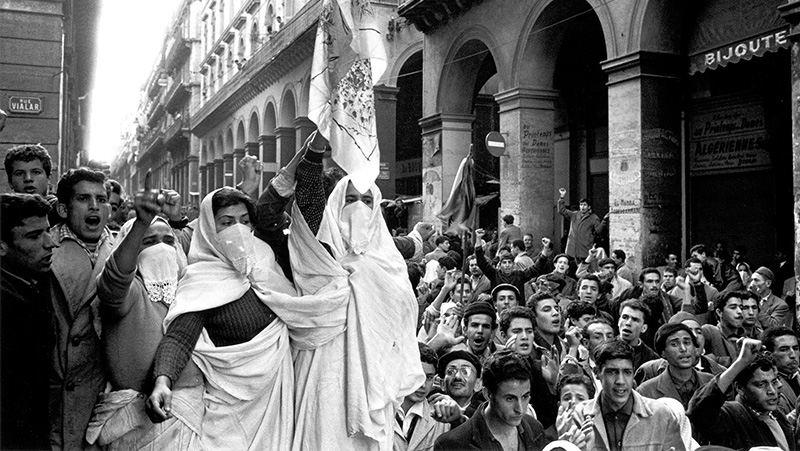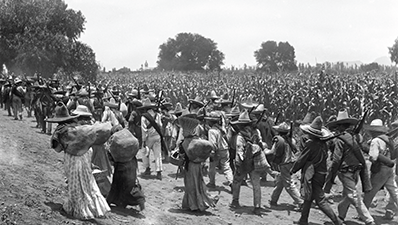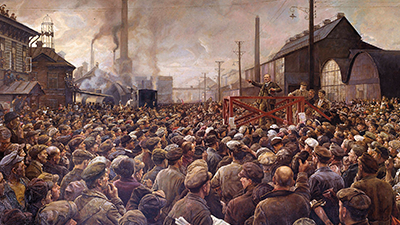Shifting Power After 1900 CE
Driving Question: What internal and external factors contributed to the transformation of states after 1900 CE?
Over the long nineteenth century, the greatest determinants of a state’s power were its abilities to industrialize and to acquire colonies. The control of that power usually fell into the hands of the elite, who benefitted from the labor of the working class to accumulate resources in support of the state. In the early 1900s, this started to change as workers began to challenge the ruling classes in states across the world.
Learning Objectives
- Explain how internal and external factors contributed to change in various states after 1900.
- Explain the causes and consequences of historical events that occurred during World War I, such as the Russian Revolution.
- Use the historical reasoning process of comparison to assess the similarities and differences between the Russian Revolution and another political revolution.
Vocab Terms:
- authoritarianism
- communism
- democracy
- nationalization
- rationing
- redistribution
- socialism
Opener: Shifting Power After 1900
To teach this lesson step, refer to page 3 of the Lesson 7.1 Teaching Guide.
Openers are great for activating prior knowledge and getting students engaged in learning. Read more in the OER Project Openers and Closer Guide.
What do you already know about some of the main ideas of this lesson? Enlist your prior knowledge in this brain dump.
Global Shifts in Power
To teach this lesson step, refer to page 3 of the Lesson 7.1 Teaching Guide.
Explore how political power shifted before, during, and after the world wars, from traditional monarchies, aristocracies and other wealthy elites to new ideologies like socialism and fascism.
-
Guiding Questions
-
Before you read
Preview the questions below, and then skim the article. Be sure to look at the section headings and any images.
While you read
Look for answers to these questions:
- In this article, how are “power” and being “powerful” defined? What are some of the sources of power the author identifies?
- What is the economic-military cycle of power described in this article, and how does it work?
- In what specific ways does the article show challenges to power within a state?
- What were some important differences between socialism and fascism described in the article?
- What challenges to global power structures emerged after the Second World War?
After you read
Respond to the following questions:
- Using evidence from the article, explain the most significant causes of political change after 1900.
- How do the power shifts outlined in this article help you respond to the Unit Problem: “What were the causes of global conflict from c. 1900 to the present?”
Comparison: Mexican and Russian Revolutions
To teach this lesson step, refer to page 5 of the Lesson 7.1 Teaching Guide.
Want to provide your students with structured feedback on their historical comparison skills? The Comparison Feedback Form is perfect for this!
Not all revolutions are the same. There are different motivations and different outcomes. In this exercise, you will compare the Mexican and Russian Revolutions.
The Mexican Revolution
To teach this lesson step, refer to page 9 of the Lesson 7.1 Teaching Guide.
The story of the Mexican Revolution could be told many ways. As both a political and a social revolution, it had the potential to create great change.
-
Guiding Questions
-
Before you read
Preview the questions below, and then skim the article. Be sure to look at the section headings and any images.
While you read
Look for answers to these questions:
- What’s the difference between a social revolution and political revolution, according to the author?
- Who was Porfirio Diaz, and why did some think of him as a dictator?
- Why did Francisco Madero’s presidency fail?
- What role did the United States play in the Mexican Revolution?
- Who were the two sides of the revolution after 1913, and what did each side want?
After you read
Respond to the following questions:
- Using evidence from this article, explain how internal and external factors contributed to political change after 1900.
- Write a list of the causes of the Mexican Revolution and rank those causes from most important to least important. Then, identify whether each cause was a “political” cause or a “social” cause. Based on your list, do you think the Mexican Revolution was more of a political revolution or more of a social revolution? Explain your reasoning.
The Power of One: Russian Revolution
To teach this lesson step, refer to page 10 of the Lesson 7.1 Teaching Guide.
What is the one lesson that you absolutely want to teach every year? See what an OER Project teachers has to say about the Russian Revolution in this Forum thread.
World War I devastated Russia, and led to political unrest, mass casualties, and economic collapse. Amid strikes and protests, the Bolsheviks, led by Vladimir Lenin, seized power, but the country’s struggles continued.
-
Guiding Questions
-
Before you read
Preview the questions below, and then skim the article. Be sure to look at the section headings and any images.
While you read
Look for answers to these questions:
- Why does the author suggest that Russian peasants would have been excited upon hearing about the Russian Revolution?
- How were the tsar’s actions one of the causes of the revolution?
- Why did Russia have a different experience with nationalist fervor than its European neighbors?
- After the tsar stepped down, why did the Provisional Committee eventually lose power to the Bolsheviks?
- How did the Bolsheviks change both economic systems and social interactions and organization in Russia?
After you read
Respond to the following questions:
- To what extent does this article explain how internal and external factors contributed to change in various states after 1900?
- Dissatisfaction with Russian governance was high before the First World War. What role did that conflict play in the Revolution? Could we say that the war caused the Revolution? Why, or why not?
Closer: Shifting Power After 1900
To teach this lesson step, refer to page 12 of the Lesson 7.1 Teaching Guide.
Global shifts in power occurred in the lead up to World War I. Time to do some CCOT analysis.






